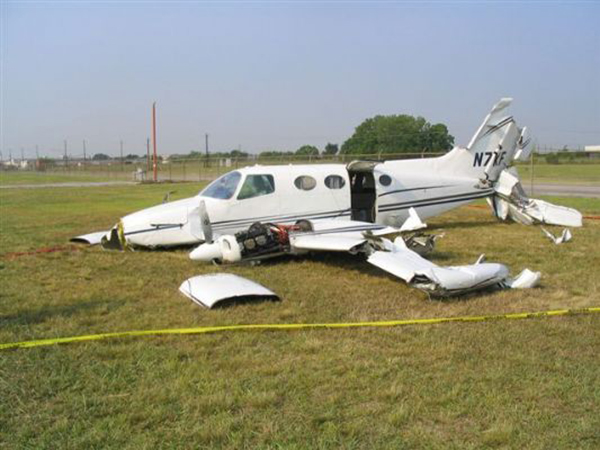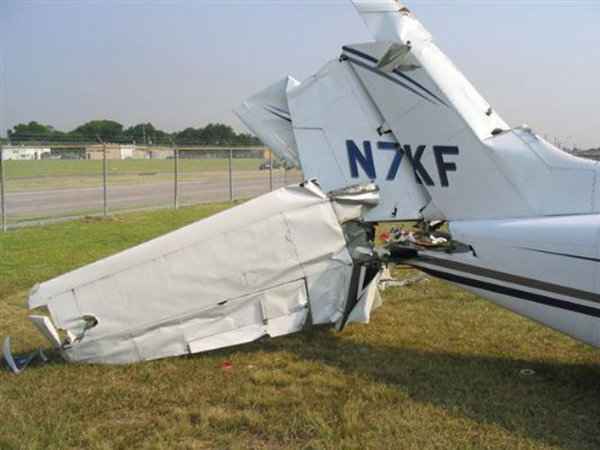Country
Crash of a Cessna 401 near Chanute: 4 killed
Date & Time:
May 11, 2012 at 1630 LT
Registration:
N9DM
Survivors:
Yes
Schedule:
Tulsa - Council Bluffs
MSN:
401-0123
YOM:
1991
Crew on board:
1
Crew fatalities:
Pax on board:
4
Pax fatalities:
Other fatalities:
Total fatalities:
4
Captain / Total hours on type:
13.00
Aircraft flight hours:
2455
Circumstances:
While en route to the destination airport, the pilot turned on the cabin heater and, afterward, an unusual smell was detected by the occupants and the ambient air temperature increased. When the pilot turned the heater off, dark smoke entered the cabin and obscured the occupants' vision. The smoke likely interfered with the pilot’s ability to identify a safe landing site. During the subsequent emergency landing attempt to a field, the airplane’s wing contacted the ground and the airplane cartwheeled. Examination of the airplane found several leaks around weld points on the combustion chamber of the heater unit. A review of logbook entries revealed that the heater was documented as inoperative during the most recent annual inspection. Although a work order indicated that maintenance work was completed at a later date, there was no logbook entry that returned the heater to service. There were no entries in the maintenance logbooks that documented any testing of the heater or tracking of the heater's hours of operation. A flight instructor who flew with the pilot previously stated that the pilot used the heater on the accident airplane at least once before the accident flight. The heater’s overheat warning light activated during that flight, and the heater shut down without incident. The flight instructor showed the pilot how to reset the overheat circuit breaker but did not follow up on its status during their instruction. There is no evidence that a mechanic examined the airplane before the accident flight. Regarding the overheat warning light, the airplane flight manual states that the heater “should be thoroughly checked to determine the reason for the malfunction” before the overheat switch is reset. The pilot’s use of the heater on the accident flight suggests that he did not understand its status and risk of its continued use without verifying that it had been thoroughly checked as outlined in the airplane flight manual. A review of applicable airworthiness directives found that, in comparison with similar combustion heater units, there is no calendar time limit that would require periodic inspection of the accident unit. In addition, there is no guidance or instruction to disable the heater such that it could no longer be activated in the airplane if the heater was not airworthy.
Probable cause:
The malfunction of the cabin heater, which resulted in an inflight fire and smoke in the airplane. Contributing to the accident was the pilot’s lack of understanding concerning the status of the airplane's heater system following and earlier overheat event and risk of its continued use. Also contributing were the inadequate inspection criteria for the cabin heater.
Final Report:
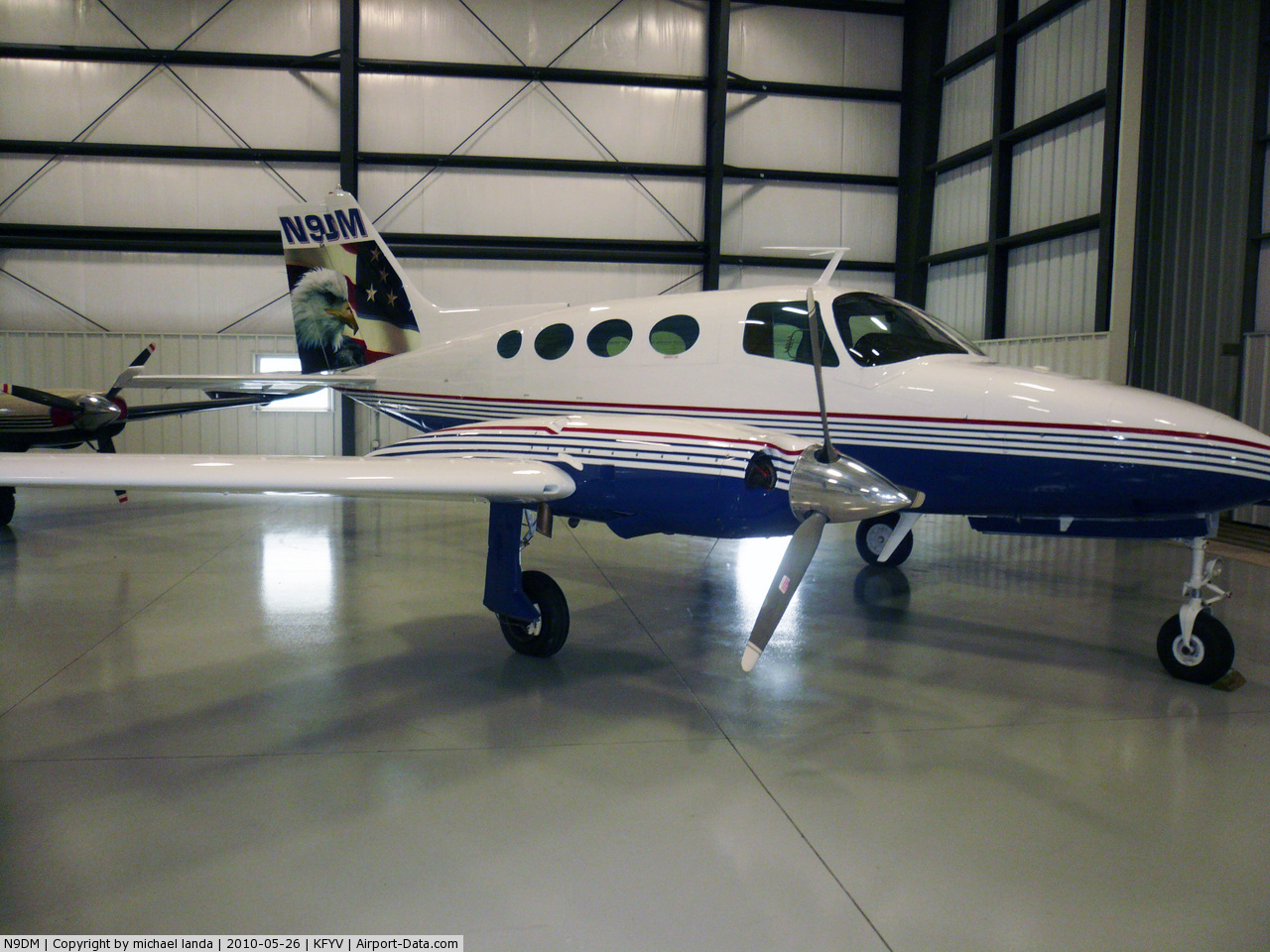
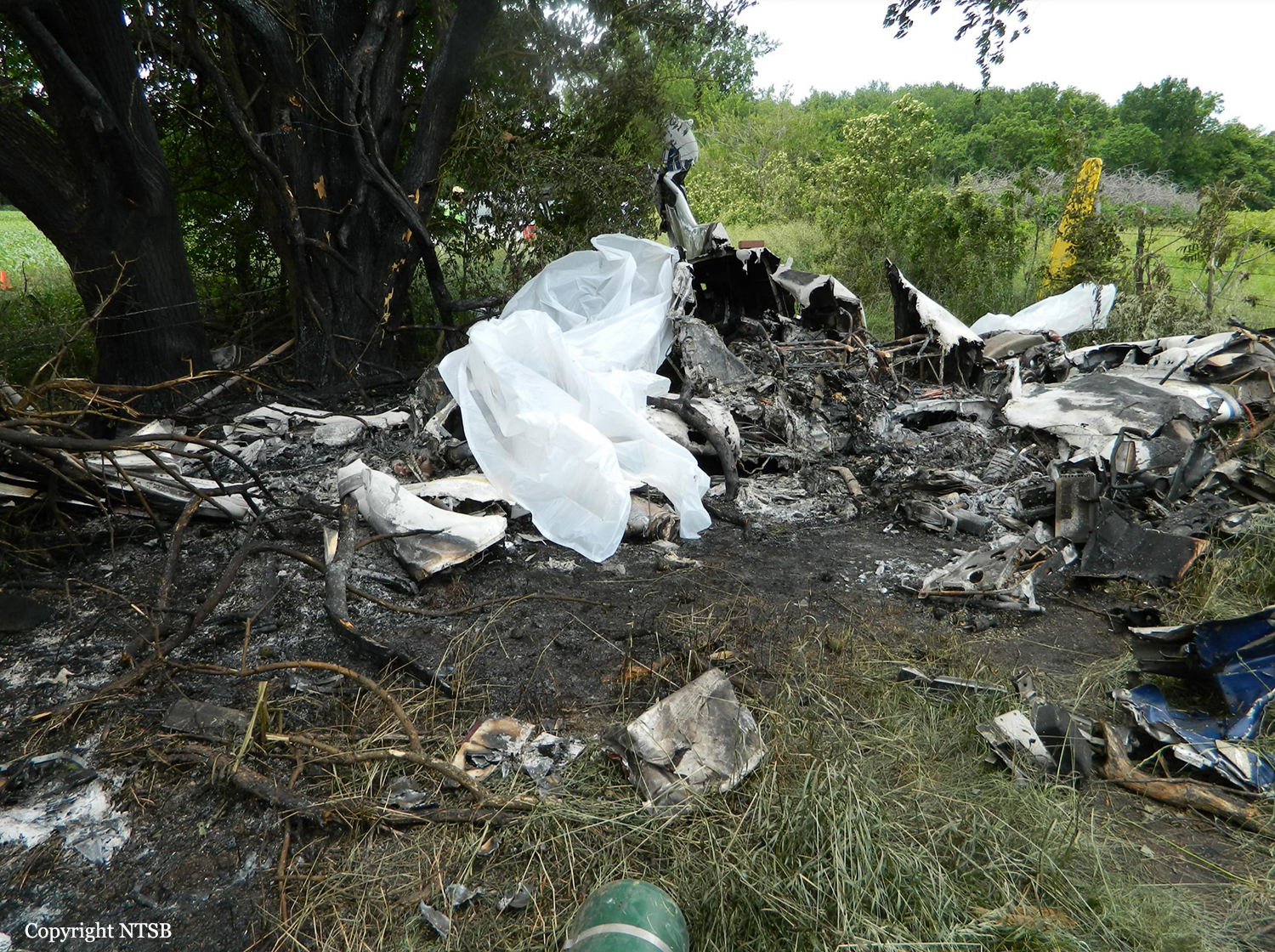
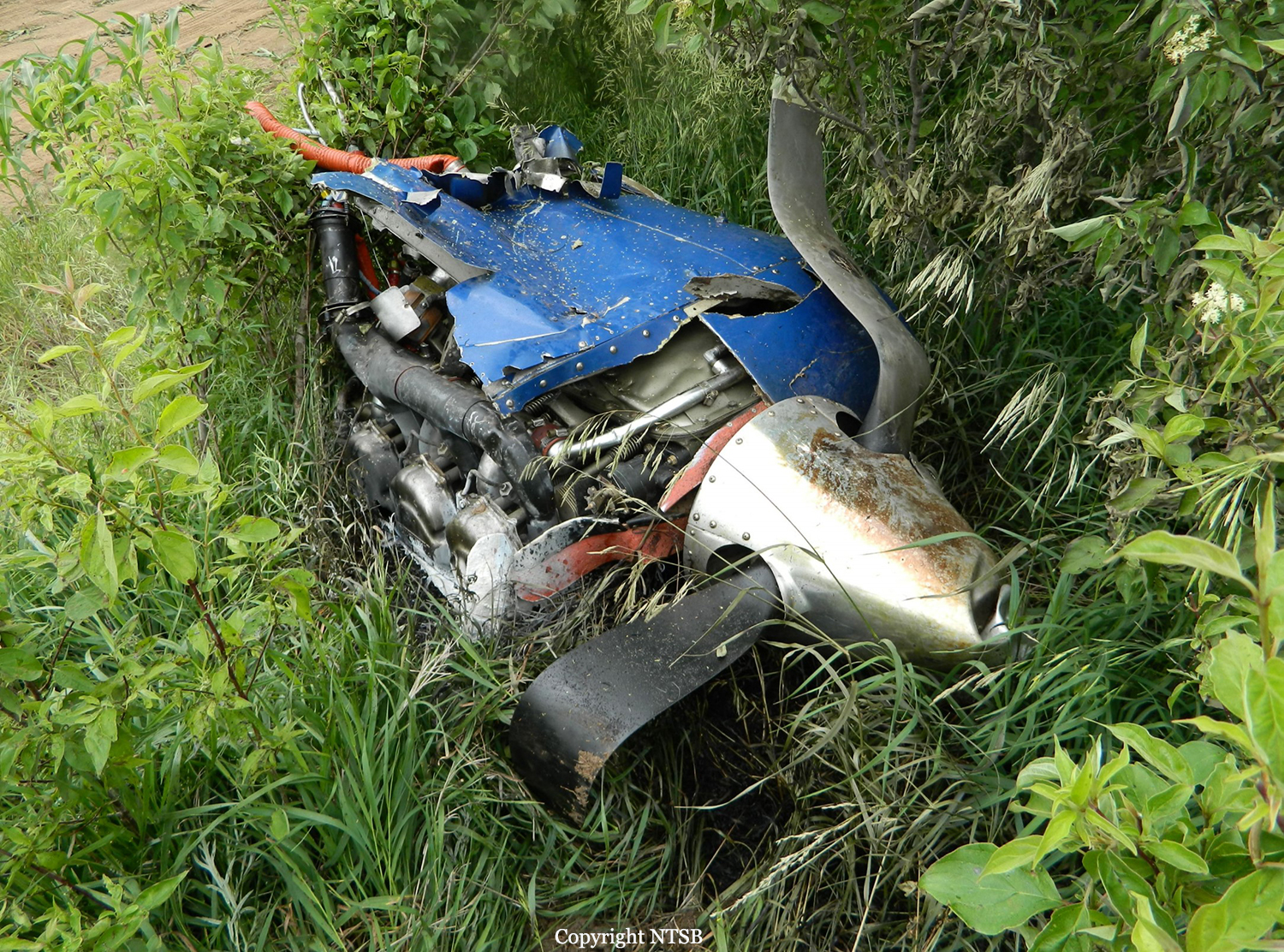
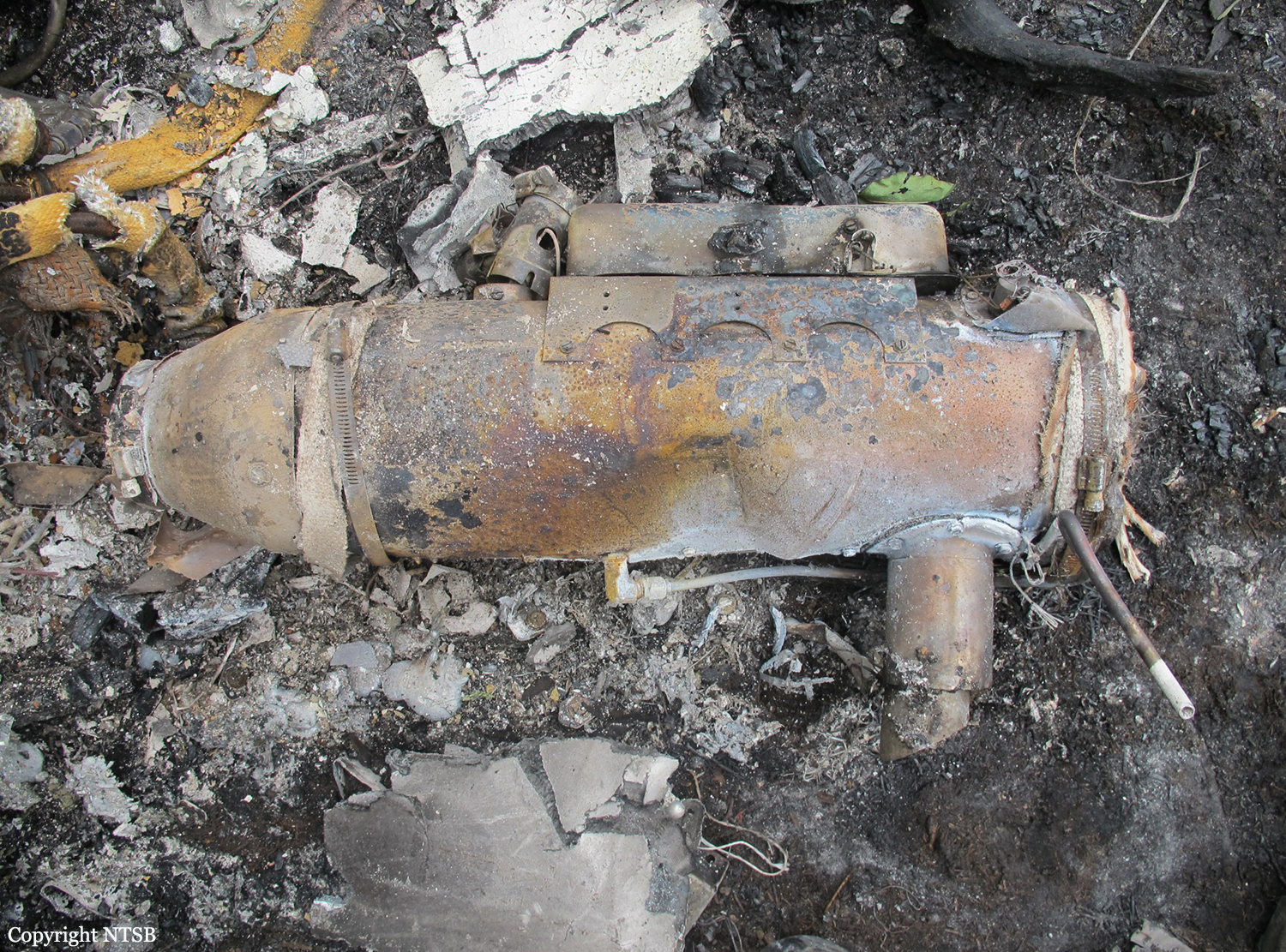
Crash of a Cessna 401A in Gladewater
Date & Time:
Nov 12, 2011 at 1635 LT
Registration:
N531MH
Survivors:
Yes
Schedule:
Natchitoches - Gladewater
MSN:
401-0097
YOM:
1969
Crew on board:
1
Crew fatalities:
Pax on board:
4
Pax fatalities:
Other fatalities:
Total fatalities:
0
Captain / Total hours on type:
468.00
Circumstances:
The aircraft was substantially damaged while landing at the Gladewater Municipal Airport (07F), Gladewater, Texas. The private pilot and three passengers received minor injuries, and the forth passenger was seriously injured. The airplane was registered to and operated by the pilot. Visual meteorological conditions prevailed and a visual flight rules (VFR) flight plan was filed for the 14 Code of Federal Regulations Part 91 personal flight. The cross-country flight originated from the Natchitoches Regional Airport (IER), Natchitoches, Louisiana, around 1550. While preparing to enter the traffic pattern at 1,800 feet above ground level, the pilot checked the wind on his Garmin 696 with NEXRAD and also heard a wind update on the radio for the nearest weather facility. The current wind was understood to be from 170 degrees between 20 and 25 knots. The pilot entered the pattern in a left downwind for runway 14 and began to slow the airplane down. The pilot stated he was on short final and at an airspeed of about 120 knots when a gusting crosswind pushed the airplane 30 feet right of the runway centerline and began to descend very quickly. The pilot decided to perform a go-around maneuver and added full engine power. As engine power was added, the twin-engine airplane began to roll to the right. The pilot then elected to reduce engine power and land. The airplane impacted and exited the runway before coming to rest in an upright position. Investigators from the National Transportation Safety Board, the Federal Aviation Administration, Cessna Aircraft Co., and Continental Motors, Inc. performed a post accident examination of the airplane and the engines. Examination of the airplane revealed substantial damage to the fuselage, empennage, wings, and landing gear. No preaccident mechanical malfunctions or failures were found that would have precluded normal operation. At 1553, the aviation routine weather report at East Texas Regional Airport in Longview, Texas, about 16 nautical miles southeast of the accident location was: wind 170 degrees and 16 knots gusting to 23 knots; visibility 10sm; few clouds at 4,900 feet above ground level; temperature 23 degrees Celsius and dew point 13 degrees Celsius; altimeter 29.92 inches of mercury. At 1530, the weather station reported a peak wind gust of 27 knots from 190 degrees.
Probable cause:
The pilot’s failure to maintain control of the airplane during the landing and attempted go-around in a gusty crosswind.
Final Report:
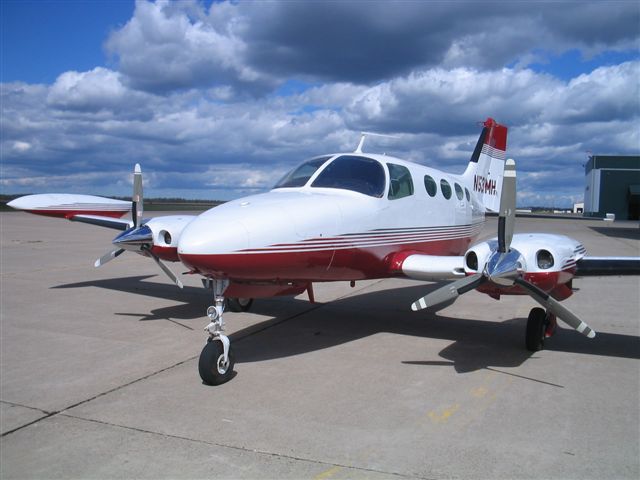
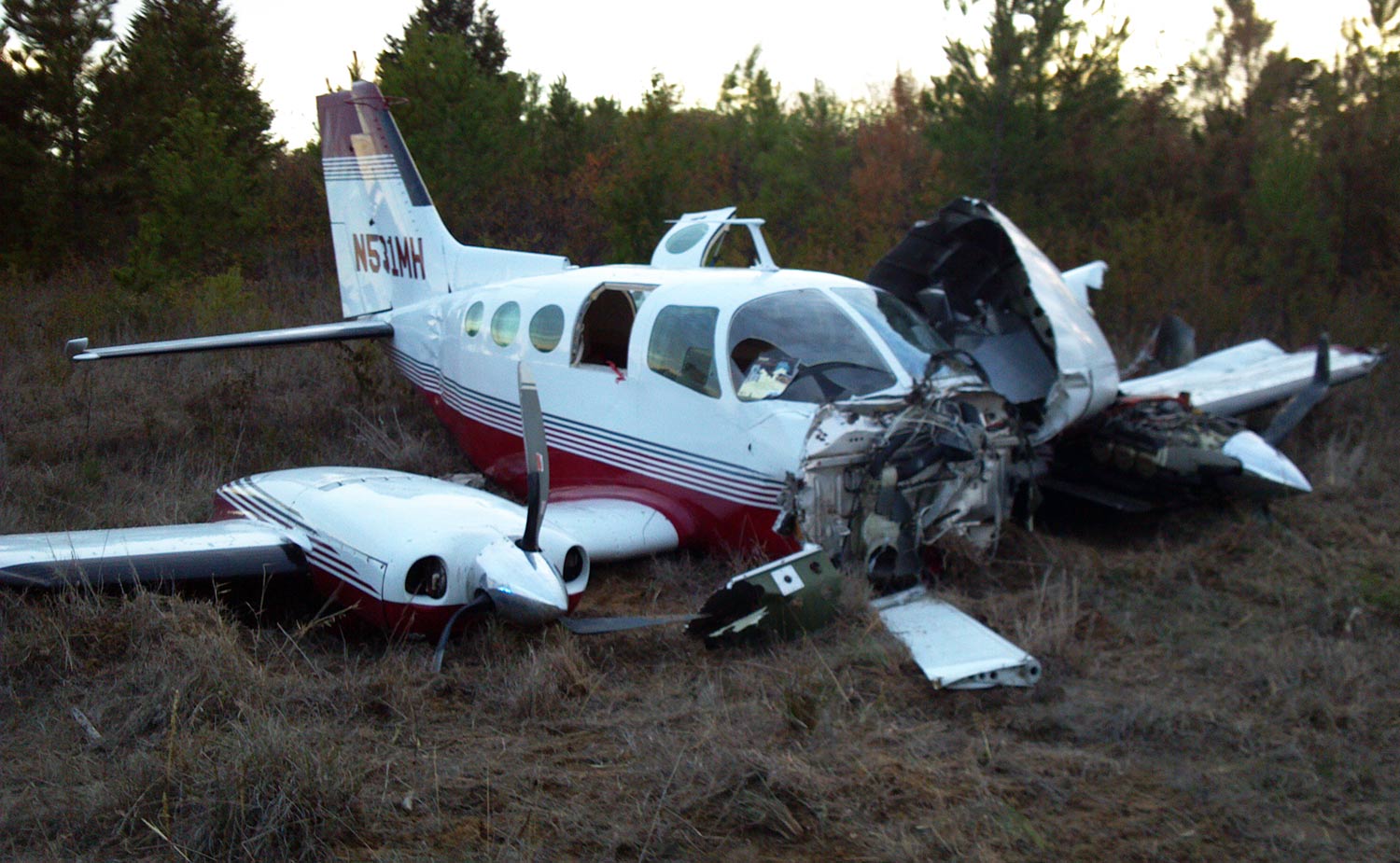
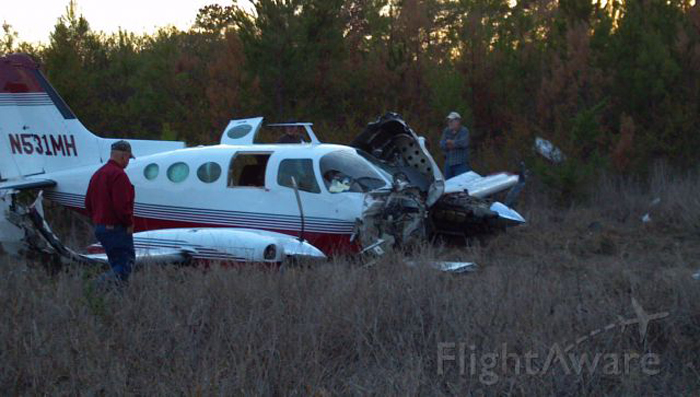
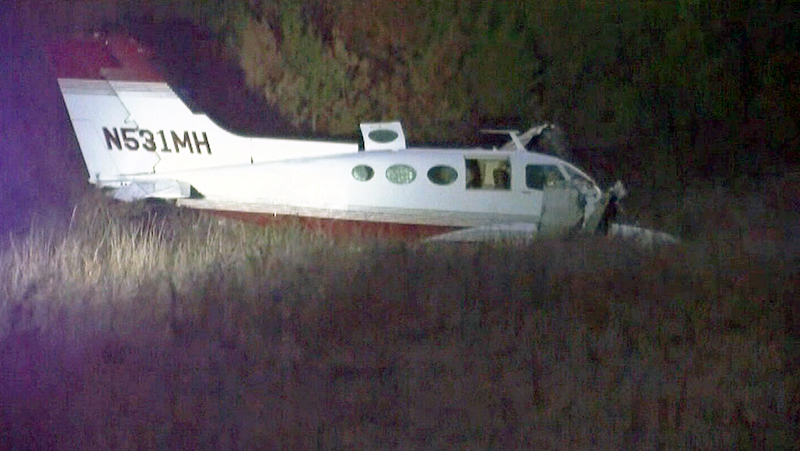
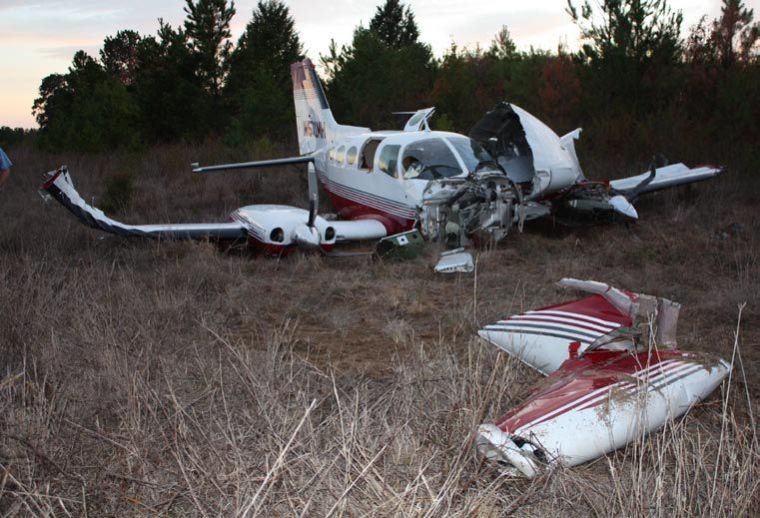
Crash of a Cessna 401A near Nairobi: 2 killed
Date & Time:
Oct 21, 2011 at 1523 LT
Registration:
5Y-CAE
Survivors:
Yes
Schedule:
Nairobi - Marsabit - Lodwar - Nairobi
MSN:
401-0011
YOM:
1967
Crew on board:
1
Crew fatalities:
Pax on board:
2
Pax fatalities:
Other fatalities:
Total fatalities:
2
Circumstances:
The twin engine aircraft departed Nairobi-Wilson Airport in the morning for a flight to Marsabit and Lodwar, carrying exam documents. While returning to Wilson Airport in the afternoon, the airplane went out of control and crashed in an open field located about 15 km west of Wilson Airport. The pilot and a passenger were killed while the second passenger was seriously injured. The aircraft was destroyed.
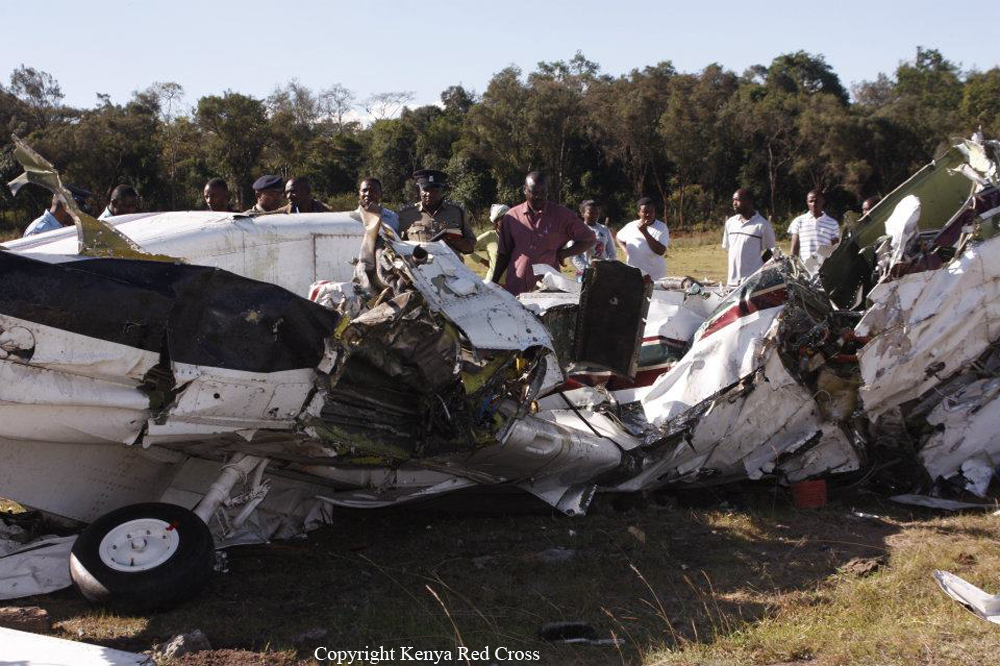
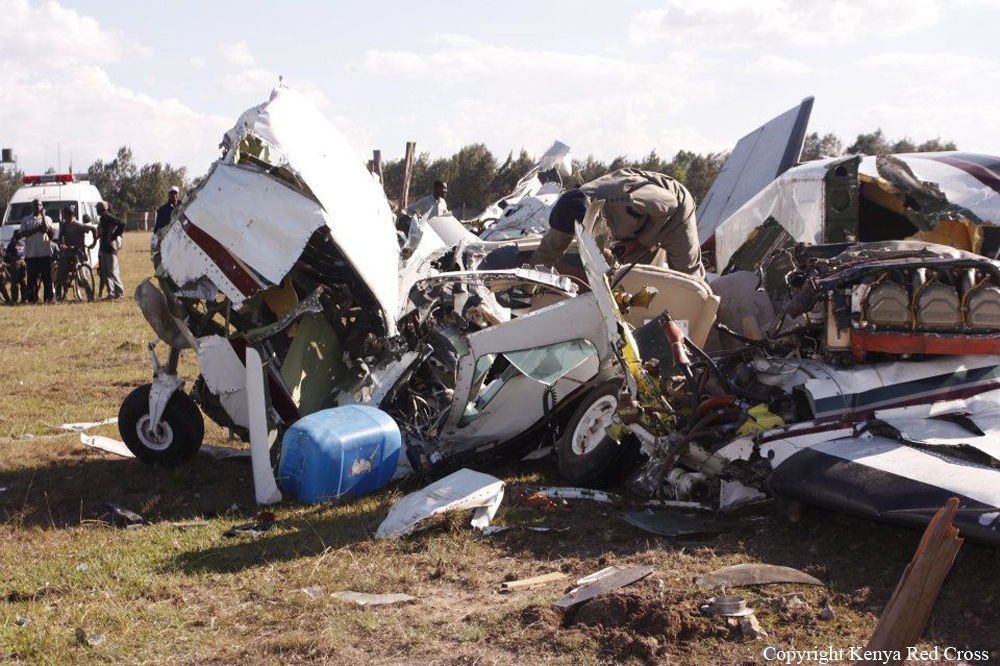

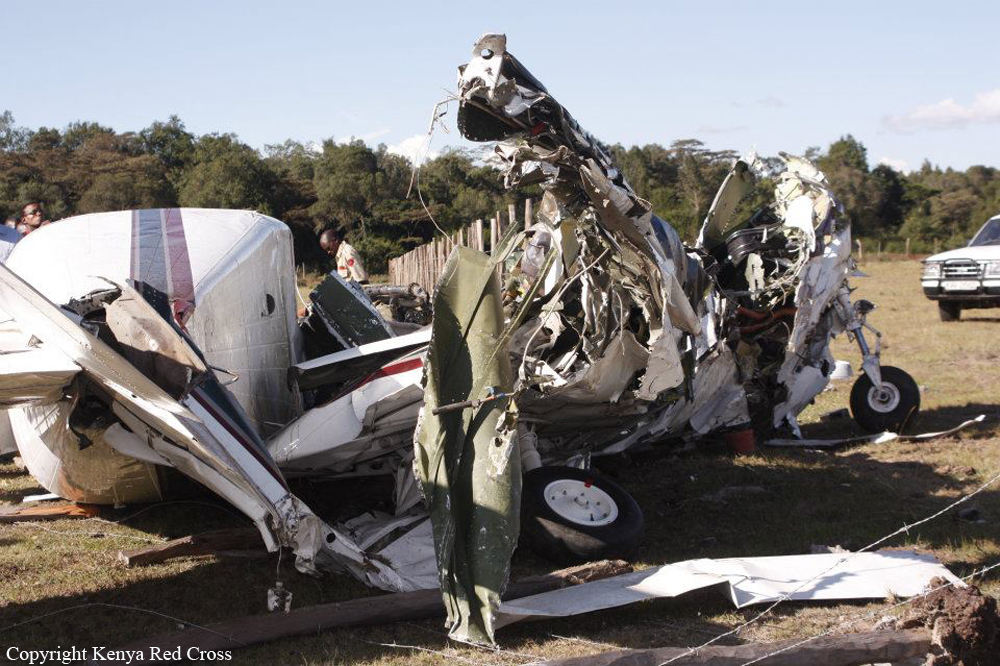
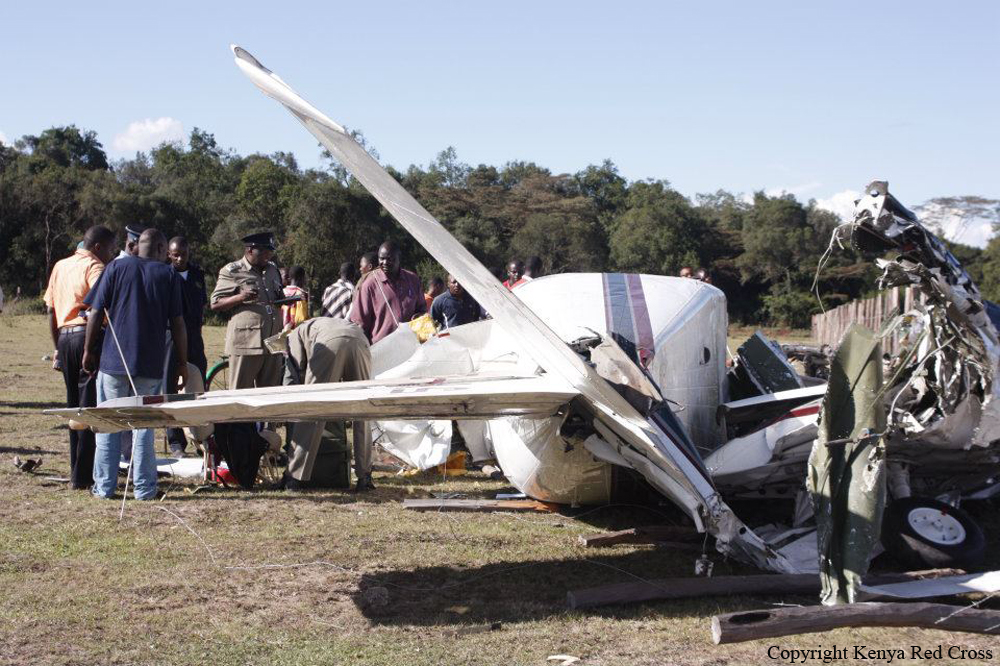

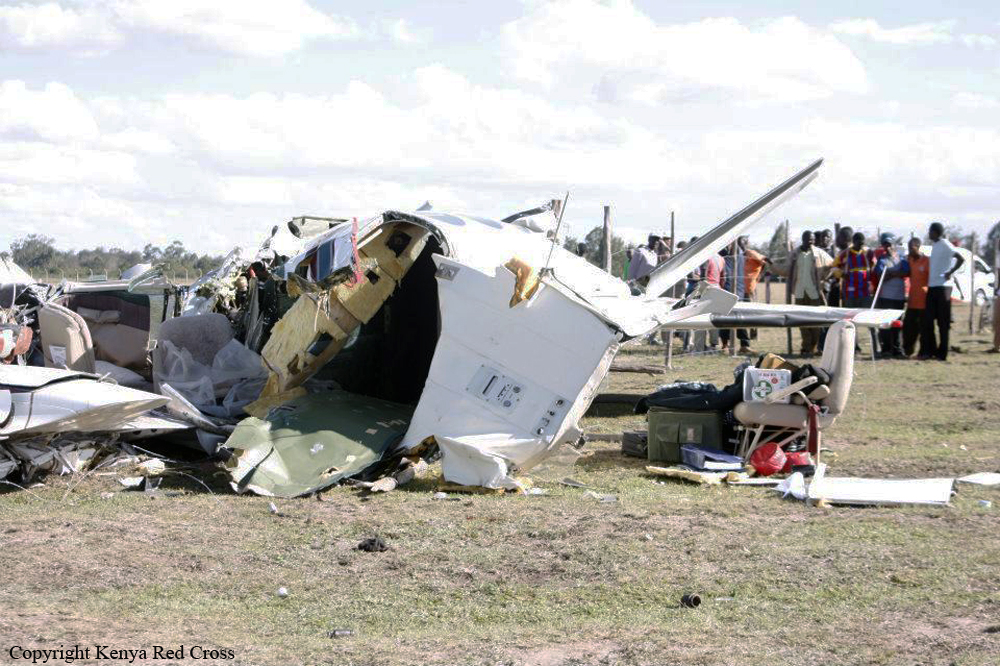
Crash of a Cessna 401 in Plymouth
Date & Time:
Jun 19, 2010 at 1703 LT
Registration:
N401TE
Survivors:
Yes
Schedule:
Plymouth - Plymouth
MSN:
401-0180
YOM:
1971
Crew on board:
1
Crew fatalities:
Pax on board:
2
Pax fatalities:
Other fatalities:
Total fatalities:
0
Captain / Total hours on type:
1200.00
Aircraft flight hours:
2004
Circumstances:
The airplane was returning from a 3-hour aerial mapping mission and was lined up for a straight-in, 5-mile final approach for landing. About 3 miles out on final approach, and prior to performing the before-landing check, both engines stopped producing power in sequence, one almost immediately after the other. The pilot said that by the time he completed his remedial actions the airplane had descended to about 200 feet above the ground and the engines would not restart. The auxiliary fuel tank gauges were bouncing between 2-5 gallons and the main tanks were bouncing around at 25 gallons per side. The pilot then selected a forced landing site between two large trees and landed the airplane in heavily wooded terrain. A detailed examination of the wreckage revealed no evidence of preimpact mechanical anomalies. According to information contained in the aircraft manufacturer’s owner's manual, the auxiliary fuel tanks are designed for cruising flight and are not equipped with pumps; operation near the ground (below 1000 feet) using auxiliary fuel tanks is not recommended. The first step in the before-landing check was to select the main fuel tanks on both the left and right fuel selectors, respectively. The pilot indicated that he should have selected the main tanks sooner and performed the before-landing check earlier in the approach.
Probable cause:
A total loss of engine power during final approach due to fuel starvation as a result of the pilot’s delayed configuration of the airplane for landing.
Final Report:

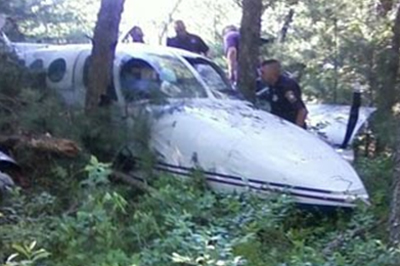
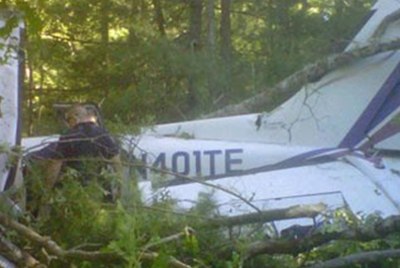
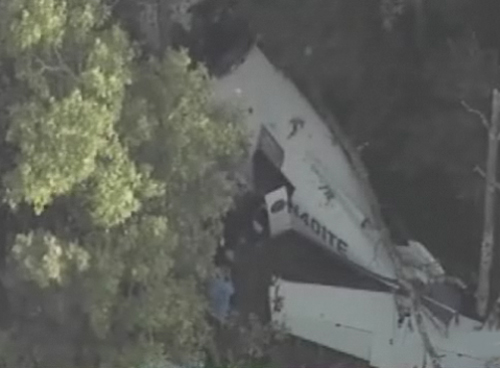
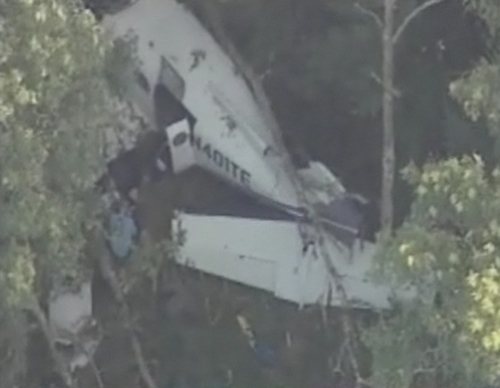
Crash of a Cessna 401A off Salt Cay
Date & Time:
Jul 24, 2009
Registration:
VQ-TLG
Survivors:
Yes
MSN:
401A-0114
YOM:
1969
Crew on board:
1
Crew fatalities:
Pax on board:
0
Pax fatalities:
Other fatalities:
Total fatalities:
0
Circumstances:
While flying around Salt Cay, the pilot was forced to attempt an emergency landing and ditched the airplane offshore. He was rescued while the aircraft came to rest in shallow water and was damaged beyond repair.

Crash of a Cessna 401 in Narsarsuaq
Date & Time:
Jan 31, 2007
Registration:
N6274Q
Survivors:
Yes
Schedule:
Goose Bay - Narsarsuaq
MSN:
401-0074
YOM:
1969
Crew on board:
2
Crew fatalities:
Pax on board:
0
Pax fatalities:
Other fatalities:
Total fatalities:
0
Circumstances:
For unknown reasons, the twin engine aircraft made a wheels up landing at Narsarsuaq Airport and came to rest. Both pilots escaped uninjured while the aircraft was damaged beyond repair. They were completing a flight from Goose Bay. The exact date of the occurrence remains unknown, somewhere in January 2007.
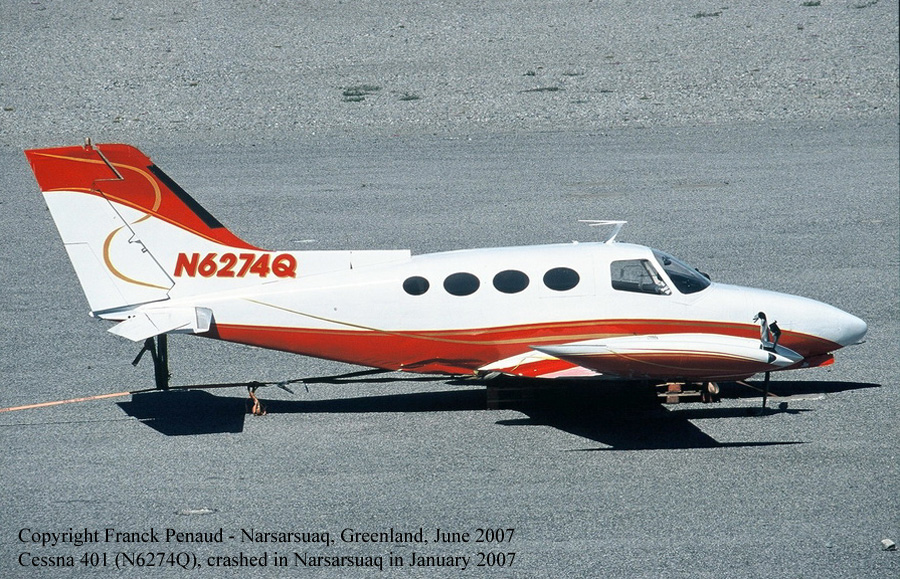
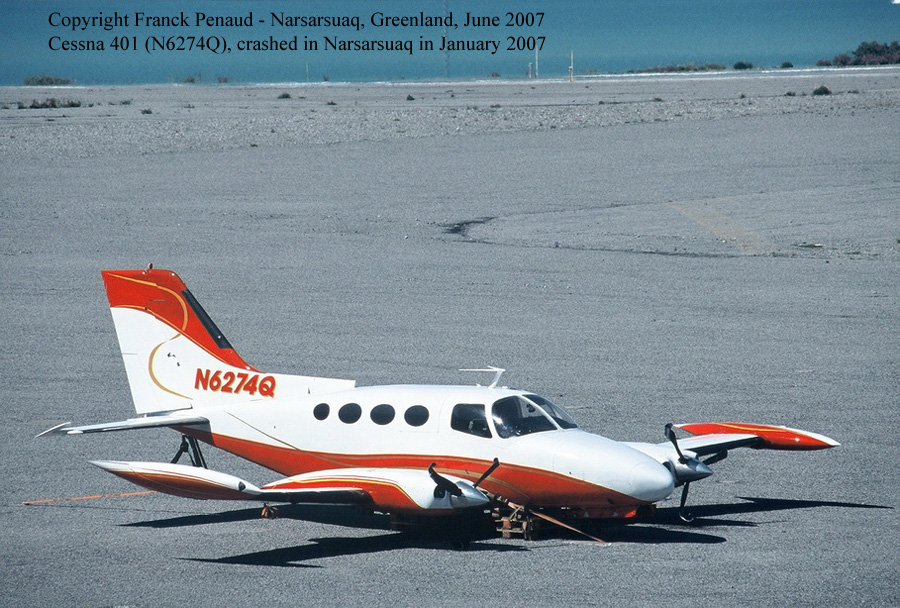
Crash of a Cessna 401A in Jackson: 7 killed
Date & Time:
Aug 28, 2006 at 1440 LT
Registration:
N408JC
Survivors:
No
Schedule:
Wichita Falls - Hazard - Middleburg
MSN:
401-0075
YOM:
1969
Crew on board:
1
Crew fatalities:
Pax on board:
6
Pax fatalities:
Other fatalities:
Total fatalities:
7
Aircraft flight hours:
6387
Circumstances:
The airplane departed on a long cross country flight, with thunderstorms and rain squalls along the general route. Approaching the destination airport, the airplane entered a rain squall, stalled, and impacted the ground in an almost vertical descent. Other than the onboard weather radar being previously removed for maintenance, there were no mechanical anomalies noted with the airplane. The pilot, whose logbook was not recovered, was not instrument qualified. Although he was recently observed flying four to five times weekly, when the pilot applied for a multi-engine rating about 3 1/2 months earlier, he indicated 107 hours of total flight experience.
Probable cause:
The non-instrument-rated pilot's continued flight into instrument meteorological conditions, and his subsequent failure to maintain airspeed which resulted in an inadvertent stall. Contributing was the instrument meteorological conditions.
Final Report:
Crash of a Cessna 401A in Houston
Date & Time:
Jun 20, 2005 at 1826 LT
Registration:
N7KF
Survivors:
Yes
Schedule:
Corpus Christi – Houston
MSN:
401A-0110
YOM:
1969
Crew on board:
1
Crew fatalities:
Pax on board:
0
Pax fatalities:
Other fatalities:
Total fatalities:
0
Captain / Total hours on type:
92.00
Circumstances:
The 1,608-hour commercial pilot departed on a scheduled cargo flight. Prior to departure, he performed a preflight inspection and visually verified all five fuel tanks were full. The flight took approximately 1 hour for the 162 nautical mile cross-country flight. Prior to his return flight, he again checked the fuel and oil. He noted that, he had 3 hours of fuel on board. About 15 minutes after departure, the pilot switched to the auxiliary tanks. The pilot stated, "after 10-15 minutes on taking fuel from the auxiliary tanks, I switched to the right locker tank." Shortly thereafter, air traffic control instructed him to start a descent, and he selected the main fuel tanks. During the approach, the right engine began to "sputter". As the pilot was going through the engine failure checklist, the left engine "started sputtering." The pilot switched the auxiliary fuel pumps to high; then changed from the main tanks to the auxiliary fuel tanks. The airplane landed short of runway 12R. Inspection of the aircraft revealed, both auxiliary fuel tanks were "dry", the right main fuel tank contained approximately 3-inches of fuel, and the left main tank was "dry", but had been breached during the landing. The right wing locker fuel tank was full of fuel, and the transfer switch was in the off position. The left fuel selector was found in the left auxiliary position and the right fuel selector was found in the right auxiliary position. The main fuel line on the right engine had no fuel in it, and the line to the fuel manifold valve was empty as well. The left main fuel line had a "couple teaspoons" of fuel in it, and the fuel line to the left fuel manifold valve was absent of fuel.
Probable cause:
The loss of engine power to both engines due to fuel starvation as a result of the pilot's improper fuel management. A contributing factor was the lack of suitable terrain for the forced landing.
Final Report:

